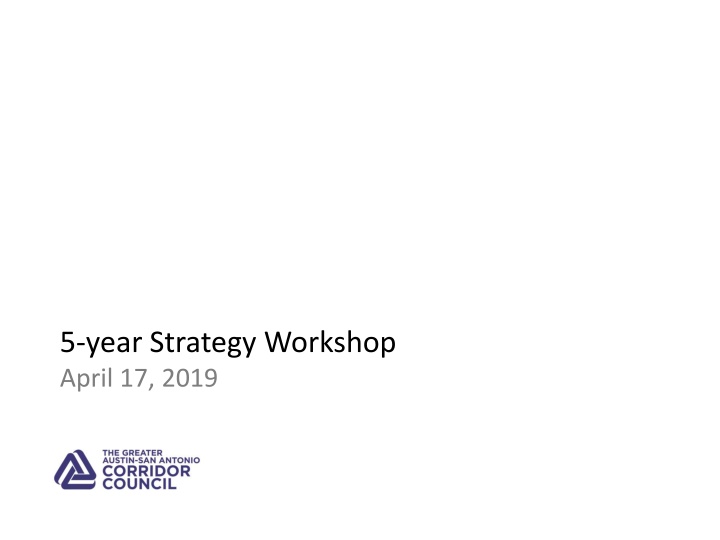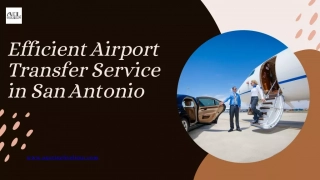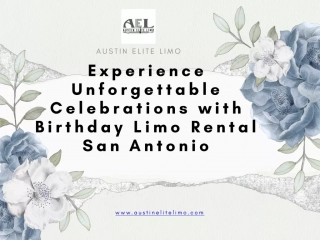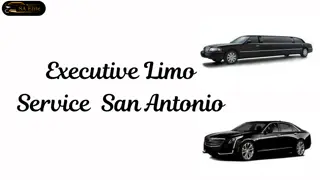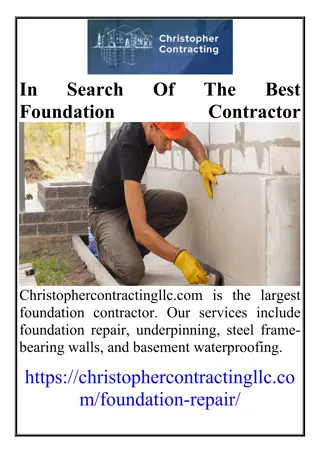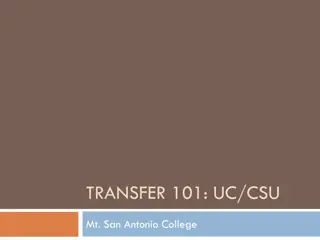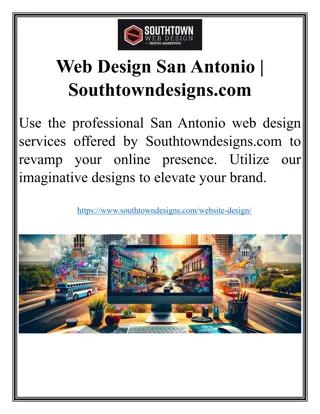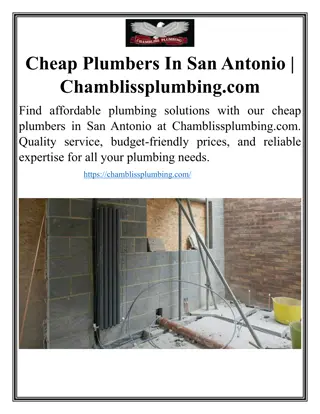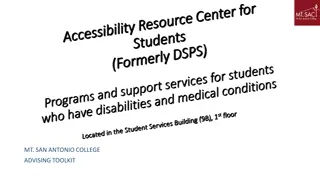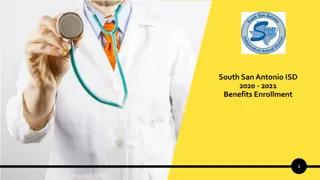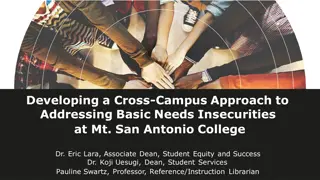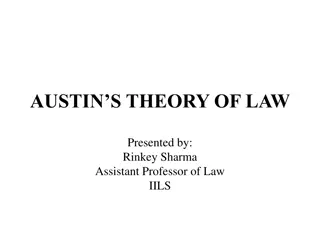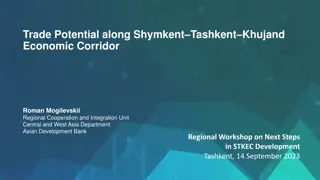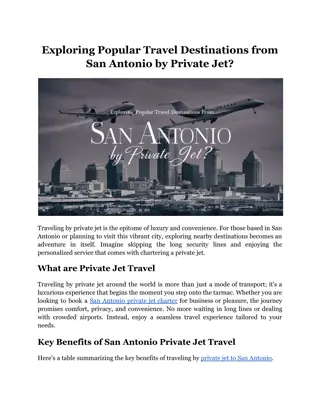Austin-San Antonio Corridor Council Strategic Workshop Highlights
This description summarizes the key activities and discussions from the Austin-San Antonio Corridor Council's strategic planning workshop held on April 17, 2019. The workshop featured sessions on 5-year plan thinking, vision and mission review, priority setting, evaluation criteria for strategies and tactics, and leadership survey results. The event aimed to shape a comprehensive strategy for the council's future endeavors, focusing on resource allocation, objectives, strategies, and tactics to achieve its goals effectively.
Download Presentation

Please find below an Image/Link to download the presentation.
The content on the website is provided AS IS for your information and personal use only. It may not be sold, licensed, or shared on other websites without obtaining consent from the author.If you encounter any issues during the download, it is possible that the publisher has removed the file from their server.
You are allowed to download the files provided on this website for personal or commercial use, subject to the condition that they are used lawfully. All files are the property of their respective owners.
The content on the website is provided AS IS for your information and personal use only. It may not be sold, licensed, or shared on other websites without obtaining consent from the author.
E N D
Presentation Transcript
5-year Strategy Workshop April 17, 2019
Thanks to Our Workshop Sponsor 2 | Austin-San Antonio Corridor Council Strategic Planning Workshop | 2019
Agenda Time Activity 10:00a Welcome, Attendee Introductions, Council History Ross Milloy 10:15a 5-Year Plan Thinking Joe Lessard Michael Aulick 10:35a Workshop Objective (Placemat) & Evaluation Criteria Hahn Public 10:45a Survey Results 11:15a Vision & Mission Review 12:00p Lunch Break The Honorable Henry Cisneros 1:15p Priority Setting Hahn Public 1:50p Wrap Up & Next Steps 2:00p Closing Comments Ross Milloy 3 | Austin-San Antonio Corridor Council Strategic Planning Workshop | 2019
Greater Austin-San Antonio Corridor Council 5-Year Strategy Vision: Mission: Objective Strategies Tactics Leader The allocation of resources. The things we ll do to accomplish the strategies A broad statement regarding what we want to accomplish. Specific: What do I want to accomplish and why: Specific reasons, purpose or benefits of accomplishing the tactic. Tactics should be simple, sensible and significant. Measurable: Establish concrete criteria for measuring progress toward the attainment of each goal you set. Answer: How much? How many? Tactics should be meaningful and motivating. Achievable: Attitudes, abilities, skills, and financial capacity are all important. Tactics should be agreeable and attainable. Goal Strategy 2 here The numeric measure of our objective. Realistic: But be sure every tactic contributes substantially toward the strategy. Well written tactics inspire because they appear to be achievable. Tactics should be reasonable, realistic and resourced, results-based. Time Bound: When will accomplish the tactic? Tactics should be time-based, time limited and time-sensitive. Strategy 3 here
Strategy & Tactic Evaluation Criteria Does the Suggested Strategy or Tactic Scoring 1. Increase Corridor Council Membership 3 = Absolutely 2 = Likely 1 = Unsure 2. Respond to either/both Austin and San Antonio policy priorities? 3 = Absolutely 2 = Likely 1 = Unsure 3. Regional is scope; not addressable by individual cities? 3 = Absolutely 2 = Likely 1 = Unsure 4. Others? 6 | Austin-San Antonio Corridor Council Strategic Planning Workshop | 2019
Leadership Survey (n=26) Q: Your relationship with the Corridor Council? 7 | Austin-San Antonio Corridor Council Strategic Planning Workshop | 2019
Leadership Survey (n=26) Q: In general, how do you feel about the Corridor Council? 8 | Austin-San Antonio Corridor Council Strategic Planning Workshop | 2019
Leadership Survey (n=26) Q: Are the Vision & Mission adequate? 9 | Austin-San Antonio Corridor Council Strategic Planning Workshop | 2019
Leadership Survey (n=26) Q: Are the Vision & Mission adequate? Add more about quality of life with a strategy and measurable objectives, e.g. Less commuting stress, affordable housing, and water resource protection. It needs to reflect the Council's primary job as a bonding agent between the two major metro areas. Equity needs to be included in the vision statement given the lack thereof of it often times in transit discussions. 10 | Austin-San Antonio Corridor Council Strategic Planning Workshop | 2019
Leadership Survey (n=26) Q: How relevant is the Corridor Council today? 11 | Austin-San Antonio Corridor Council Strategic Planning Workshop | 2019
Leadership Survey (n=26) Q: Accomplishments the past three years? 12 | Austin-San Antonio Corridor Council Strategic Planning Workshop | 2019
Leadership Survey (n=26) Q: Missed opportunities the past three years? 13 | Austin-San Antonio Corridor Council Strategic Planning Workshop | 2019
Leadership Survey (n=26) Q: Corridor Council core competencies? 14 | Austin-San Antonio Corridor Council Strategic Planning Workshop | 2019
Leadership Survey (n=26) Q: If you could add a core competency, what would it be? 15 | Austin-San Antonio Corridor Council Strategic Planning Workshop | 2019
Leadership Survey (n=26) Q: Highest and lowest current priorities? Excessive Population growth is a killer of quality of life Population - need to plan for this now and in the extended future. Transit is the issue I would expect for this council too address in a strong manner Traffic and congestion - solve that and the other issues are nearly moot. 16 | Austin-San Antonio Corridor Council Strategic Planning Workshop | 2019
Leadership Survey (n=26) Q: Highest and lowest future priorities? More government, more San Antonio involvement Communities along the corridor have adopted policies tied to improved transportation goals and development patterns. High speed rail along or within the I35 ROW has been used to create commuter rail along the corridor. HOV and heavy truck pass through lanes speed traffic through cities with enforcement of traffic laws. CC is recognized as a preeminent regional force for unity, cohesion, and forward thinking in the public and business sector. 17 | Austin-San Antonio Corridor Council Strategic Planning Workshop | 2019
Leadership Survey (n=26) Q: Magic wand: Change one thing about Corridor Council? 18 | Austin-San Antonio Corridor Council Strategic Planning Workshop | 2019
Leadership Survey (n=26) Q: Future Board Member qualities? 19 | Austin-San Antonio Corridor Council Strategic Planning Workshop | 2019
Leadership Survey (n=26) Q: Future Executive Director qualities? 20 | Austin-San Antonio Corridor Council Strategic Planning Workshop | 2019
Leadership Survey (n=26) Q: Other thoughts? Participation The strategic plan should include a large community outreach program in all corridor communities with local leaders and council board members who can help identify solutions. Seek advice of regional tech and creative leaders. Start including the smaller communities. Input and planning by current board members will be insufficient to identify the broader value and potential relevance of the organization. Signature Project Find another leading project. SH130 was very successful, the regional park/trail system was a non-starter; regional rail has seen its day come and go. What next? Continue to support regional rail Governance We should copy the good ideas from the RPA and SPUR, and reorganize ASACC to be more like them. Check out AURA - they are perhaps a little more rabid than is helpful, but they are pushing for change. I'd love to see us be a little more like them. 21 | Austin-San Antonio Corridor Council Strategic Planning Workshop | 2019
5-year Plan Thinking: Joe Lassard Potential Topics/Priorities Emerging multi-modal transportation market Auto/rideshare/EV/AV potential Workforce housing connection Land use connection Public-Private funding opportunities (P3) Transportation infrastructure (including IT/EV/AV) 1. Transportation: Mobility, Access & Affordability Job creation & retention Creative industry ecosystem/growth 2. Economic Opportunity/ Education Cost of living Affordable Housing preservation/development 3. Affordability Climate change/air quality/sustainability Greenspace & recreation access 4. Quality of Life/ Environment Workforce development 5. Education/ Lifelong Learning 2020 demographic changes Immigration/immigration system issues/asylum Weather mass long-term dislocation of coastal communities during catastrophes, regional flooding Public safety 6. Census/ Population Issues
5-year Plan Thinking: Henry Cisneros Potential Topics/Priorities Today, 4.3M people in combined MSAs; 15% of Texas population; $278B in GDP 42nd largest in the world. In 2050, 9M people; 20% of Texas population 1. 2. Surface transportation: adding lanes for transit, autonomous vehicles on 281, I35 and SH130 3. Air transportation: No joint airport (too far apart), rather, destination hubs and direct routes 4. Power generation: shift to solar and wind 5. Water sourcing 6. UT System leverage: Dell Medical w/ UT Health 7. Military leverage: San Antonio installations; Futures Command in Austin 8. Professional sports: baseball, hockey, football 9. Biomedical: 160K employed in San Antonio alone 10. Tourism: destination San Antonio, side trip to Austin and vice versa 11. Branding: Corridor can take its place in the Texas Triangle as a metroplex; promote region beyond borders as an economic engine. 12. Strength: Corridor Council, like RPA in NYC, can serve as a visionary hub; leverage with university partners. 24 | Austin-San Antonio Corridor Council Strategic Planning Workshop | 2019
Priority Setting Vision Inputs Votes Mission Inputs Votes Tot. 1. Region as a unified, connected and collaborative; Cooperation, coordination, potential IIIII III 1. Collaborate, convene, coordinate, unite; leverage growth; shared vision IIIII IIIII IIIII III 26 2. Leadership IIIII III 2. Advocacy, engagement, implementation IIIII III 16 3. Brand Region/Metro and Council together to make the case for the region; differentiation IIIII IIIII 3. Brand Region/Metro and Council together to make the case for the region; differentiation IIII 14 4. Long-term issues head on; address barriers IIII 4. Resilient prosperity, sustainability IIIII 9 5. Primary Resource/Go-to to support coordination with gov t entities III 5. Easy-to-understand trends research; university partnership IIII 7 6. Next generation outreach II 6. Knit region together with technology, emerging tech III 5 7. Transportation I 7. Transportation I 2 8. Water I 8. Serve I 9. Education I 9. Educate III 10. Affordable Housing I 10. Innovate II 25 | Austin-San Antonio Corridor Council Strategic Planning Workshop | 2019
Vision Inputs Votes Mission Inputs Votes Tot. 1. Region as a unified, connected and collaborative Cooperation, coordination, potential IIIII III 1. Collaborate, convene, coordinate, unite; leverage growth; shared vision IIIII IIIII IIIII III 26 2. Leadership IIIII III 2. Advocacy, engagement, implementation IIIII III 16 3. Brand Region/Metro and Council together to make the case for the region; differentiation IIIII IIIII 3. Brand Region/Metro and Council together to make the case for the region; differentiation IIII 14 4. Long-term issues head on; address barriers IIII 4. Resilient prosperity, sustainability IIIII 9 5. Primary Resource/Go-to to support coordination with gov t entities III 5. Easy-to-understand trends research; university partnership IIII 7 6. Next generation outreach II 6. Knit region together with technology, emerging tech III 5 7. Transportation I 7. Transportation I 2 8. Water I 8. Serve I 9. Education I 9. Educate III 10. Affordable Housing I 10. Innovate II 26 | Austin-San Antonio Corridor Council Strategic Planning Workshop | 2019
Vision Review Vision Vision Statement An effective vision statement tells the world the change you wish to create. Highest Priority Vision Concepts Region as a unified, connected and collaborative; Cooperation, coordination, potential Leadership Brand Region/Metro and Council together to make the case for the region; differentiation Our vision is a region where ________________. Current Mission & Vision Statement Recommended Vision Statement The Greater Austin-San Antonio Corridor Council seeks to provide jobs and economic growth to our region, to provide the infrastructure required by growth in a manner designed to preserve our lifestyle and quality of life, and to promote within and beyond our communities a sense of regional identity. Policymakers and community leaders in the Austin-San Antonio view the corridor as a unified urban center in Texas and cooperate to fulfill and sustain the region s potential.
Mission Review Mission Highest Priority Mission Concepts Mission Statement Good mission statements state the work you do everyday to bring your vision to reality. Collaborate, convene, coordinate, unite; leverage growth; shared vision Advocacy, engagement, implementation Brand Region/Metro and Council together to make the case for the region; differentiation To bring our vision into reality, we do the following: ________________. Current Mission & Vision Statement Recommended Mission Statement The Greater Austin-San Antonio Corridor Council seeks to provide jobs and economic growth to our region, to provide the infrastructure required by growth in a manner designed to preserve our lifestyle and quality of life, and to promote within and beyond our communities a sense of regional identity. The Austin-San Antonio Corridor Council brings corridor leaders together to understand social trends, promotes the corridor as a unified region and advocates for solutions and resources to sustainably manage the growth of the region. 28 | Austin-San Antonio Corridor Council Strategic Planning Workshop | 2019
Greater Austin-San Antonio Corridor Council 5-Year Strategy Vision: Policymakers and community leaders in the Austin-San Antonio view the corridor as a unified urban center in Texas and cooperate to fulfill and sustain the region s potential. Mission: The Austin-San Antonio Corridor Council brings corridor leaders together to understand social trends, promotes the corridor as a unified entity and advocates for solutions and resources to sustainably manage the growth of the region. Objective Strategies Tactics Time Be THE unifying agent for and between Corridor communities. Drive sharing of best practices and thinking on common issues. Coin a brand name for the corridor as a unified metroplex. 2020 Produce an annual summit to bring together and align community leaders on with future trends and policy priorities for the region. Annual Leverage existing university and government resources to create regional trends research as central data source. 2021 Design one-stop information center to navigate corridor governments. 2022 Build a resiliency network. Encourage cities to adopt Atlas 14 as rainfall measurement standard. 2023 Create an inter-local framework for resource sharing in times of need; benchmark successes in other major urban centers. 2024 Identify and collaborate on signature projects. Develop a prioritization methodology for signature projects. 2019 Create a signature project process/approach to create regional leader alignment and resourcing agreement. 2020
